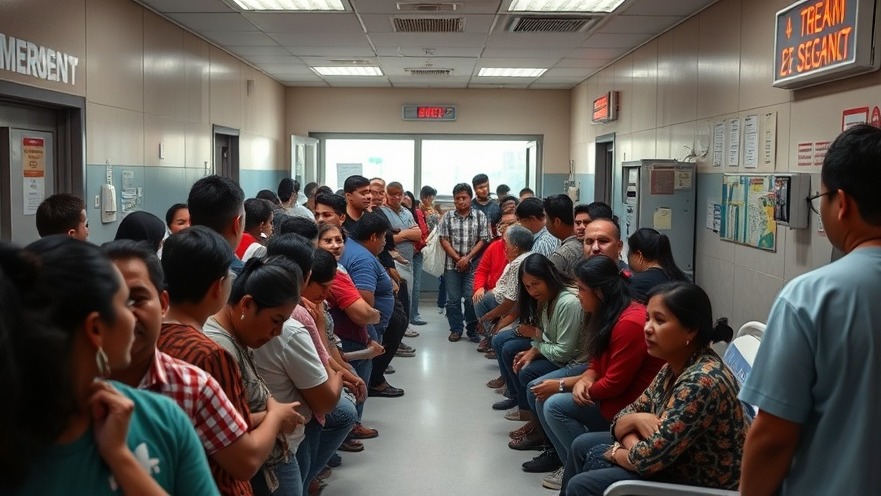
Understanding the Impact of Undocumented Immigrants on Texas Hospitals
Texas recently released data indicating that undocumented immigrants made nearly 80,000 visits to local hospitals in a three-month span, costing the state's healthcare system approximately $329 million. This statistic represents about 2% of all patient visits during that timeframe, showcasing a significant, yet often misunderstood aspect of healthcare dynamics in Texas.
The Context Behind the Numbers
While these figures might seem alarming, critics emphasize the necessity of understanding the broader context. The data lacks key information regarding payments made by undocumented patients, leaving a void in understanding the actual financial burden on hospitals. Advocates for immigrants argue that without knowing how much is actually covered through payments, the data serves to misinform rather than illuminate.
The Goals of Governor Abbott’s Executive Order: An Unfriendly Environment?
Governor Greg Abbott's executive order mandating that Texas hospitals ask for patients' citizenship status is seen by many as a move aimed at discouraging undocumented individuals from seeking medical care. By focusing on the costs associated with undocumented patients, the governor's administration appears to be framing the immigration issue through a security and economic lens, intensifying an already contentious debate surrounding immigration policy.
The Emotional and Human Impact
Such policies and the statistics surrounding them can create chilling effects among immigrant communities. Many undocumented individuals may forgo necessary medical treatment out of fear of being reported or due to increased costs in a system that signals they are unwelcome. This not only affects their health but could also have broader public health implications for Texas communities at large.
What This Means for Texans
Texans need to understand the implications of these numbers not just in terms of costs but in human terms. Access to healthcare should be a fundamental right, and the data ongoingly circulated may fuel fears and misconceptions about their neighbors who rely on emergency care. The relationship between immigrant health and the healthcare system is a reminder of the interconnectedness of society, where treatment of some impacts all.
A Look at Current Efforts and Future Trends
Despite the challenges posed by the current healthcare climate, organizations dedicated to health and food justice are pushing back against narratives that vilify immigrants. Efforts are underway to provide education, resources, and support systems to undocumented individuals navigating the healthcare landscape. As these organizations advocate for better healthcare access, it raises questions about what the future holds for Texas's legislative approach to immigration and health policy.
Counterarguments: The Other Side of the Debate
It’s crucial to recognize the varying perspectives on this issue. Proponents of the governor’s policies argue that the costs associated with undocumented patients strain the healthcare system, potentially leading to higher prices for all Texas residents. They claim accountability for these costs must lie at the federal level. This ongoing clash of perspectives highlights the complexities of healthcare funding and immigration policy.
In summary, the statistics released by Texas Health and Human Services provoke important discussions about the intersections of healthcare, immigration, and community welfare. As these conversations unfold, it is on all Texans to consider both the numbers and the human stories behind them.
 Add Element
Add Element  Add Row
Add Row 



Write A Comment